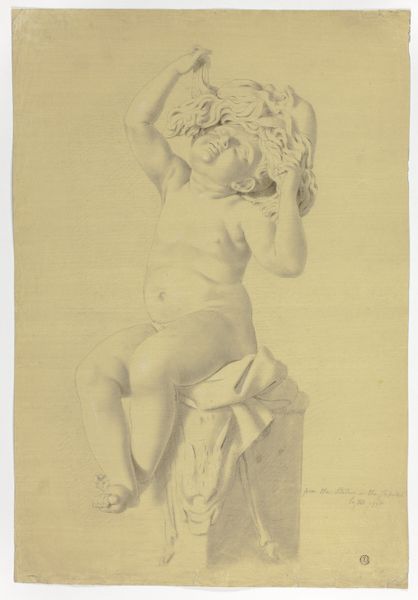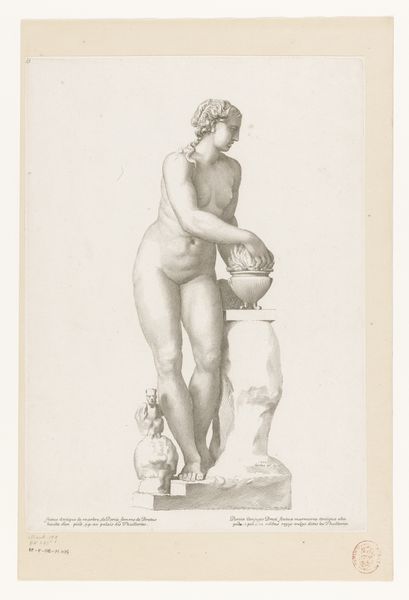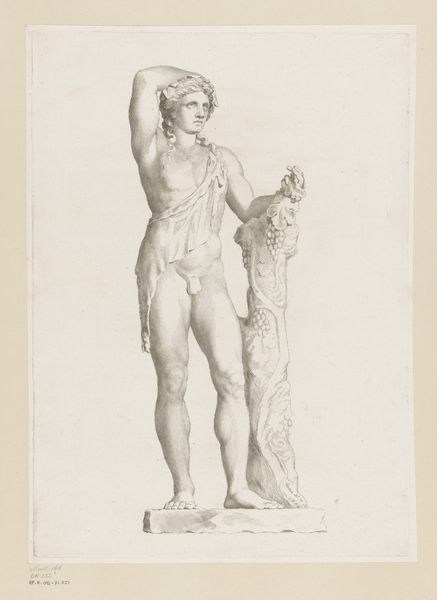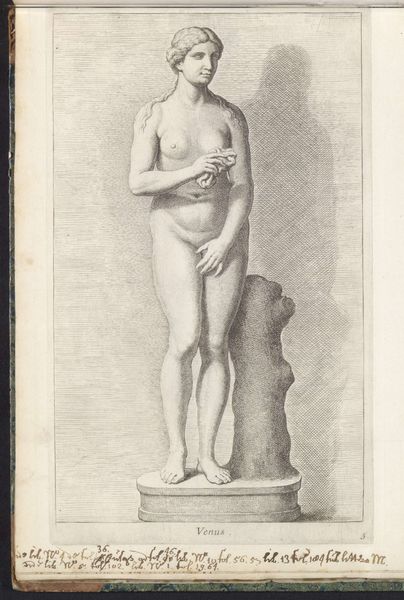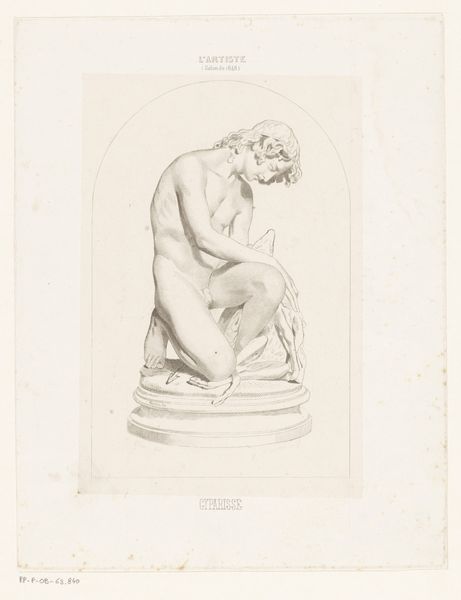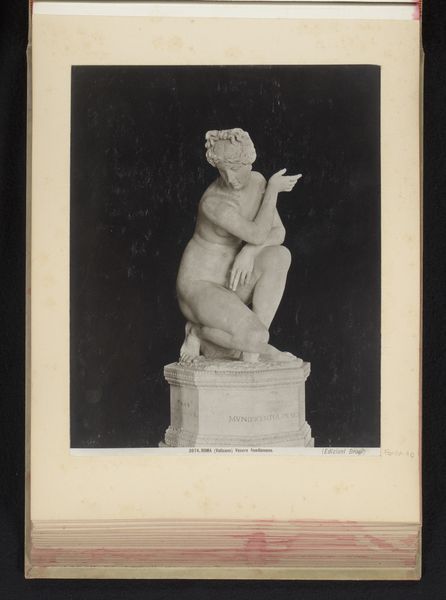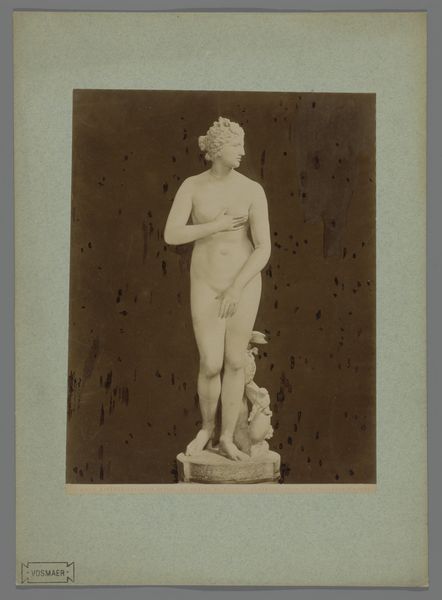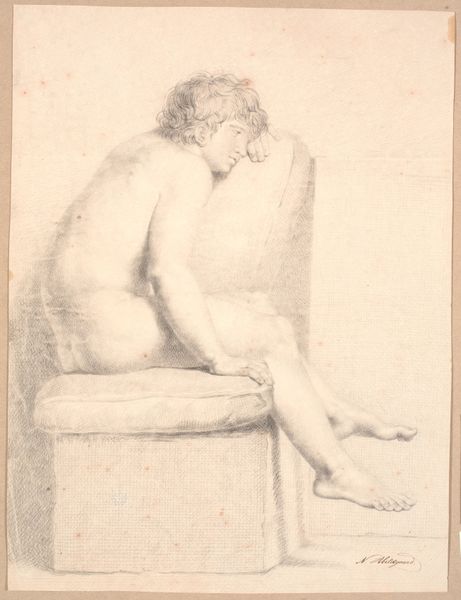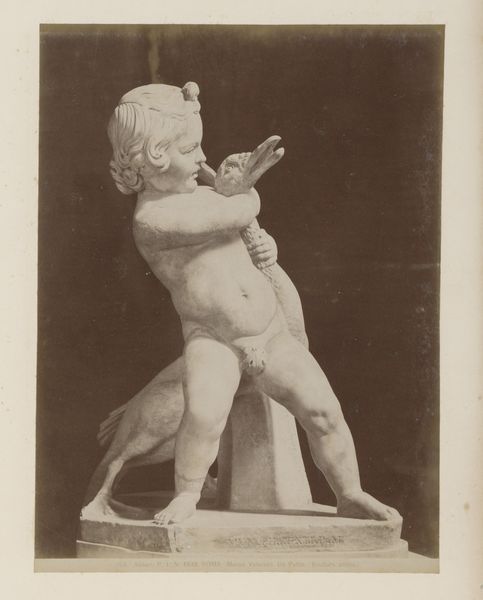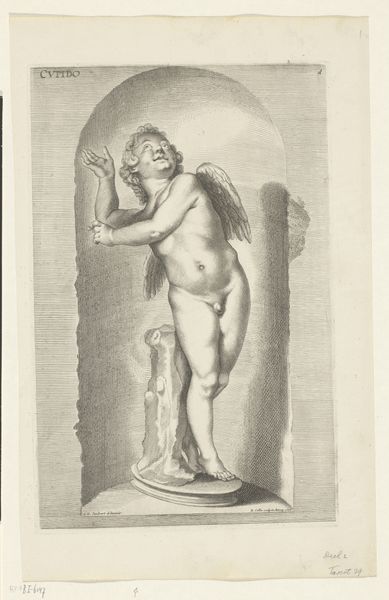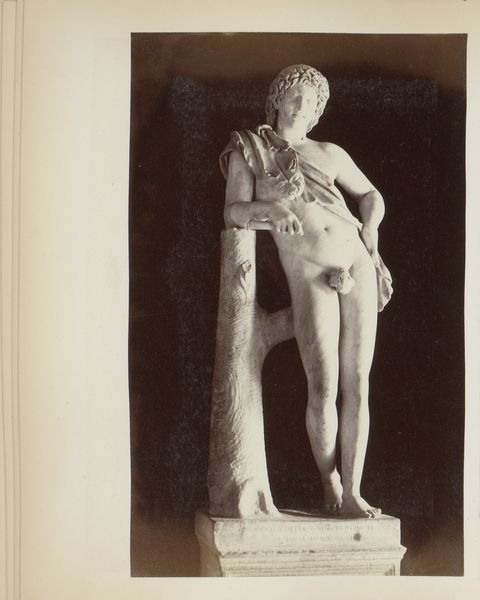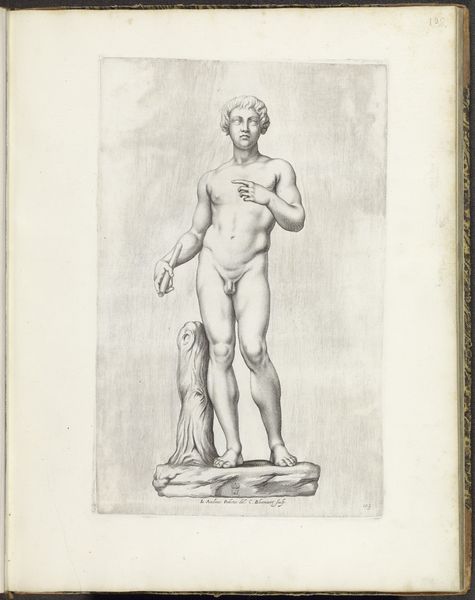
drawing, print, paper, sculpture, pencil, charcoal
#
portrait
#
drawing
# print
#
pencil sketch
#
classical-realism
#
charcoal drawing
#
paper
#
pencil drawing
#
sculpture
#
pencil
#
charcoal
#
history-painting
#
academic-art
#
nude
#
watercolor
Dimensions: 504 × 393 mm
Copyright: Public Domain
John Downman made this graphite drawing of the Statue of Crouching Venus in England in the late 18th or early 19th century. It gives us a glimpse into the art world and social norms of that time. During this period, the Grand Tour was a popular tradition, where upper-class Europeans, particularly the British, traveled to Italy to immerse themselves in classical art and culture. This drawing is a copy of an ancient Roman sculpture, which itself was a copy of a Greek original. These sculptures, often of nude figures, represented ideal beauty and were highly valued. Downman, like many artists of his time, studied and copied classical works as part of his artistic training. The act of copying classical sculptures was not just about skill, but also about aligning oneself with the values of ancient Greece and Rome, which were seen as the foundation of Western civilization. The Royal Academy, an important institution at the time, promoted this classical style. Studying this drawing helps us understand the role of classical art in shaping artistic taste and social values in 18th and 19th century England. Art historians use sources like letters, exhibition catalogues, and academic records to learn more about the context in which art was made.
Comments
No comments
Be the first to comment and join the conversation on the ultimate creative platform.
